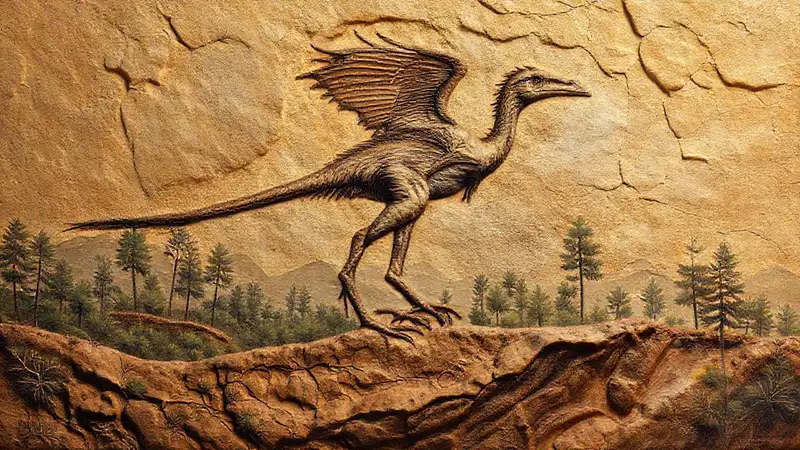Archaeopteryx is one of the most iconic and significant fossils in the history of paleontology. Discovered in Bavaria, Germany, in 1861, it represents a crucial bridge between the reptilian world and the avian lineage. Its discovery, alongside other feathered dinosaurs, revolutionized our understanding of evolutionary history and dramatically reshaped the concept of how birds evolved from their reptilian ancestors. The remarkable preservation of Archaeopteryx, featuring both reptilian and avian characteristics, has provided paleontologists with invaluable data for reconstructing the steps leading to the emergence of flight. Studying Archaeopteryx continues to illuminate the complex and fascinating story of avian evolution.
The Reptilian Traits – A Vestige of the Past
Archaeopteryx retained several skeletal features strongly reminiscent of its reptilian ancestors. The most prominent of these is the presence of teeth. Unlike modern birds, Archaeopteryx possessed a full set of teeth on its jaws, a clear indicator of its reptilian heritage. Furthermore, its tail was long and composed of numerous individual vertebrae, similar to those found in lizards and dinosaurs. Analyzing the skeletal structure, it's evident that Archaeopteryx relied heavily on the powerful musculature of its ancestors for locomotion, not the lightweight skeletal adaptations seen in modern flight. These features don't simply indicate a recent evolutionary divergence; they reveal a deep-rooted connection to the Mesozoic reptiles.
The Avian Traits – Seeds of Flight
Despite its reptilian ancestry, Archaeopteryx exhibited several features indicative of its eventual transition to a flying bird. Perhaps the most striking of these are its wings. These weren’t simply large feathers; they were formed by a modified forelimb, featuring long, asymmetrical feathers with a central quill – a fundamental characteristic of bird wings. The bones of the hand, particularly the ulna and radius, showed evidence of adaptations for flight, indicating a development towards aerodynamic efficiency. The elongated metacarpals and phalanges (finger bones) further supported this transition, foreshadowing the specialized structures of bird feet.
The Forelimb – A Crucial Transitional Structure

The forelimb of Archaeopteryx is arguably the most significant feature when considering its transitional role. The bones of the hand were clearly adapted for flight, displaying a pneumatic structure – meaning they were hollow and connected to the respiratory system. This lightweight construction was a crucial element in reducing the overall weight of the animal, enhancing its ability to fly. The arrangement of the feathers on the wing—specifically the asymmetrical pattern—suggests an early stage of flight development, moving away from the purely gliding capabilities of some earlier feathered dinosaurs. The presence of the furcula (wishbone) also demonstrated its beginning stages, providing strength and rigidity for efficient flight.
Bone Composition and Preservation – A Window to the Past
The remarkable preservation of Archaeopteryx is a testament to the conditions in which it was found. The fossil is primarily composed of carbonate minerals, which have replaced the original organic material, leaving behind a durable, three-dimensional record of the skeleton. Analysis of the bone microstructure reveals that Archaeopteryx’s bones were relatively dense and heavy compared to modern birds, reflecting its reptilian ancestry. However, the microstructure also showed evidence of vascularization, suggesting a relatively rapid growth rate, a trait often associated with birds. The exceptionally detailed preservation of the skeletal structure allows for meticulous examination of anatomy and biomechanics.
Conclusion
Archaeopteryx remains a vital piece of the puzzle in understanding the evolutionary history of birds. Its unique combination of reptilian and avian traits provides compelling evidence for a gradual evolutionary pathway from dinosaur to bird. While not a direct ancestor of modern birds, it dramatically clarifies the process of transition, showcasing how ancestral forms held characteristics of both groups. Continued research and new discoveries are constantly refining our understanding of Archaeopteryx’s role in avian evolution, solidifying its place as a cornerstone of paleontological research.





Deja una respuesta